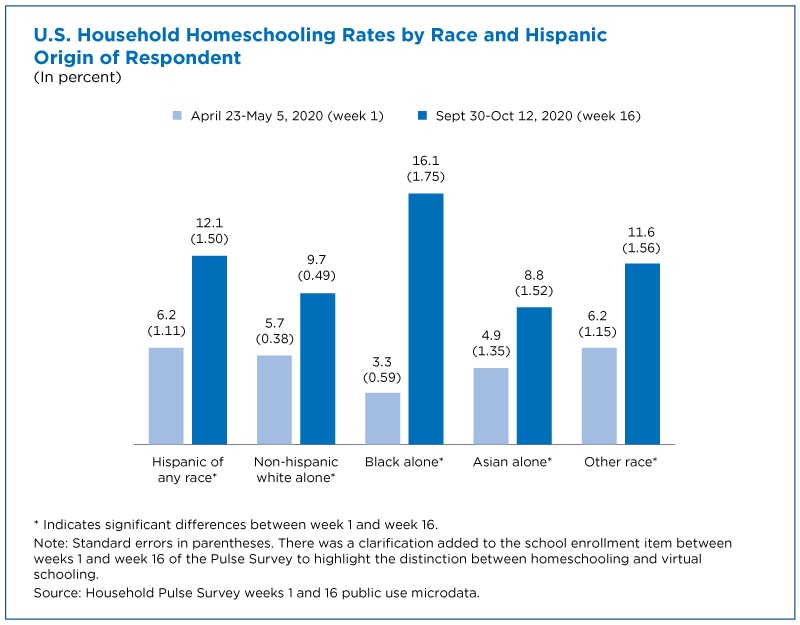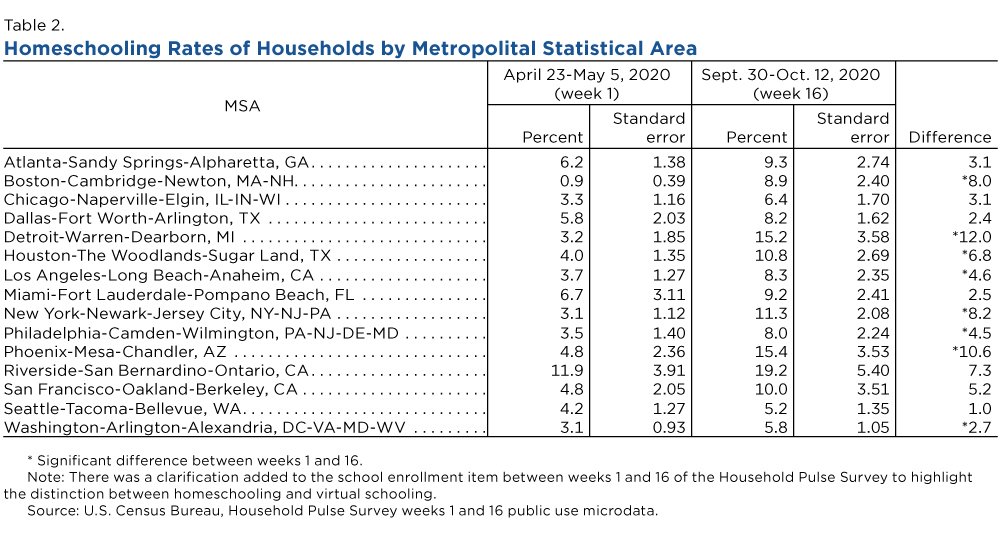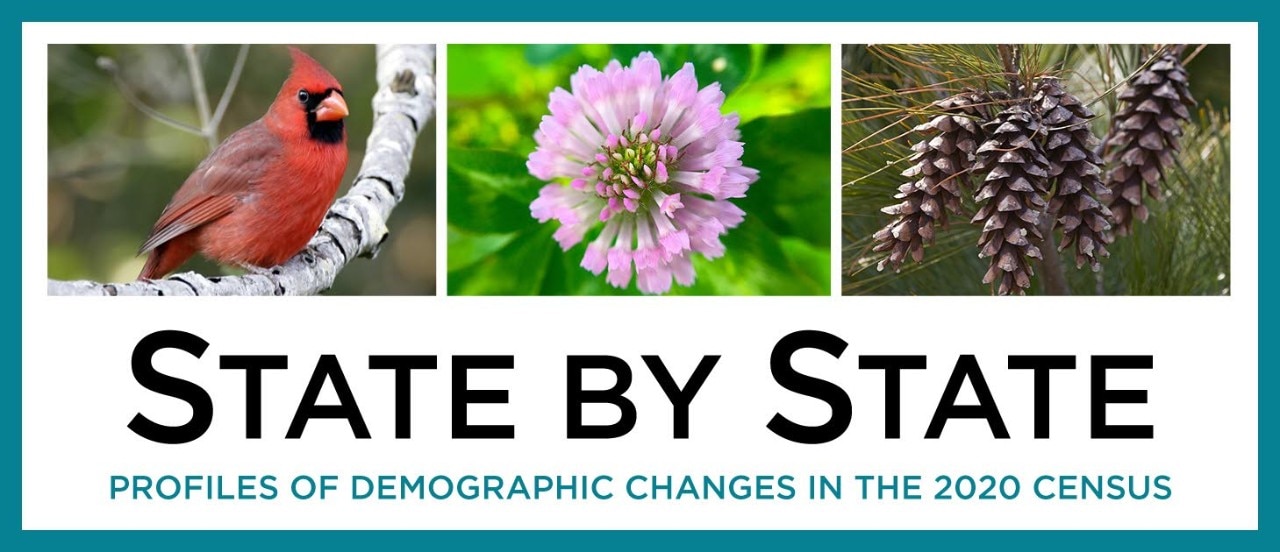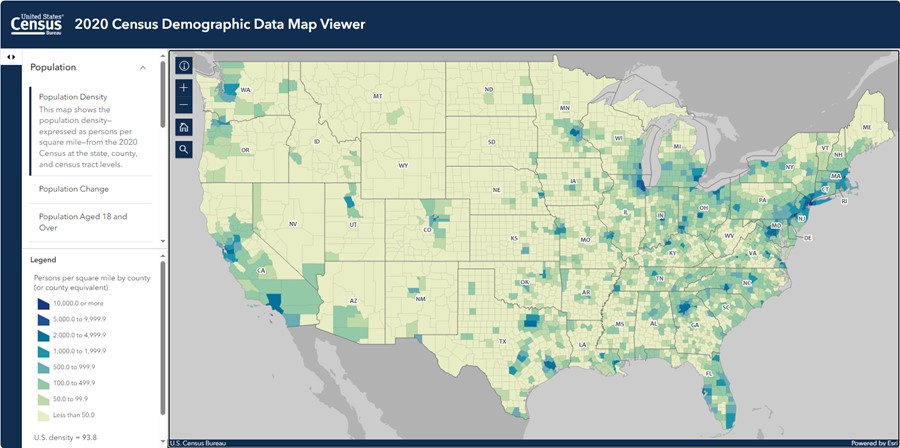Census Bureau’s Household Pulse Survey Shows Significant Increase in Homeschooling Rates in Fall 2020
Homeschooling is a legal instructional option in all 50 states and national homeschooling rates grew rapidly from 1999 to 2012 but had since remained steady at around 3.3%.
However, the global COVID-19 pandemic has sparked new interest in homeschooling and the appeal of alternative school arrangements has suddenly exploded.
So, how significantly have homeschooling rates increased during the pandemic?
It’s clear that in an unprecedented environment, families are seeking solutions that will reliably meet their health and safety needs, their childcare needs and the learning and socio-emotional needs of their children.
The U.S. Census Bureau’s experimental Household Pulse Survey, the first data source to offer both a national and state-level look at the impact of COVID-19 on homeschooling rates, shows a substantial increase from last spring — when the pandemic took hold — to the start of the 2020-2021 school year.
Using a large, nationally representative sample of U.S. households, the survey shows homeschooling is notably higher than the national benchmarks and offers a glimpse of changes in homeschooling patterns during the pandemic.
We compare survey results from the spring of the 2019-20 school year to results in the fall of the 2020-21 school year to measure the pandemic's impact on homeschooling.
Meeting Education, Health Needs
In the first week (April 23-May 5) of Phase 1 of the Household Pulse Survey, about 5.4% of U.S. households with school-aged children reported homeschooling .
By fall, 11.1% of households with school-age children reported homeschooling (Sept. 30-Oct. 12). A clarification was added to the school enrollment question to make sure households were reporting true homeschooling rather than virtual learning through a public or private school.
That change represents an increase of 5.6 percentage points and a doubling of U.S. households that were homeschooling at the start of the 2020-2021 school year compared to the prior year.
It’s clear that in an unprecedented environment, families are seeking solutions that will reliably meet their health and safety needs, their childcare needs and the learning and socio-emotional needs of their children.
From the much-discussed “pandemic pods,” (small groups of students gathering outside a formal school setting for in-person instruction) to a reported influx of parent inquiries about stand-alone virtual schools, private schools and homeschooling organizations, American parents are increasingly open to options beyond the neighborhood school.
Differences by Race and Hispanic Origin
Homeschooling rates are increasing across race groups and ethnicities.
In households where respondents identified as Black or African American (Table 1), the proportion homeschooling increased by five times, from 3.3% (April 23-May 5) to 16.1% in the fall (Sept. 30-Oct. 12). The size of the increases for the other Race/Hispanic origin groups were not statistically different from one another.
Differences by State
Some U.S. states had much larger increases in homeschooling rates for the 2020-2021 school year than others.
Massachusetts, for example, jumped from 1.5% to 12.1% while many other states did not show a significant change.
Possible contributing factors include local homeschooling variation that predated the pandemic, local rates of coronavirus infections, and local decisions about how school is being conducted during the pandemic.
Differences by Metro Area
Homeschooling rates vary among metropolitan areas, as well (Table 3).
Among the 15 largest Metropolitan Statistical Areas (MSA), for example, the Boston-Cambridge-Newton, MA-NH MSA, went from 0.9% in the spring of 2020 to 8.9% by the fall.
In contrast, the rate in the Seattle-Tacoma-Bellevue, WA, MSA was not significantly different (4.2% and 5.2%) for the same period.
Additionally, the rates are likely affected by local rates of coronavirus infections and local public school decisions about modes of instruction.
The Household Pulse Survey is designed to provide near-real-time information about the social and economic impact of the COVID-19 pandemic on American households.
Education is one of many topics covered by the survey and the data are not designed to provide a highly detailed look at the many different types of educational arrangements and innovations pursued by households in this unusual school year.
Casey Eggleston is a research mathematical statistician in the Census Bureau’s Center for Behavioral Science Measurement.
Jason Fields is the senior researcher for Demographic Programs and the Survey of Income and Program Participation in the Census Bureau’s Social, Economic, and Housing Statistics Division.
Redistricting & Voting Rights Data Office (RDO)
Visualizations
2020 Census Demographic Data Map Viewer is a web map application that includes state-, county-, and census tract-level data from the 2020 Census.
Data
Fact Sheets
Blog Posts
Newsroom
Census Academy
View training resources for 2020 Census data.
Videos
Maps
-
2020 Census Demographic Data Map ViewerThe 2020 Census Demographic Data Map Viewer is web map application that includes state, county, and tract-level data from the 2020 Census.
-
2020 Census P.L. 94-171 Redistricting Data Map SuiteHere you will find the 2020 Census P.L. 94-171 Redistricting Data Map Suite
-
TIGER/Line ShapefilesView all the available mapping files from the Geography program.
Story Ideas and Statistics
-
Stats for StoriesAmerican Education Week: November 13-17, 2023In FY2021, spending per U.S. student (public pre-K through 12th grade) was $14,347 and enrollment was 49.6 million.
-
Stats for StoriesNational Kindergarten Day: April 21, 2023The 2021 Current Population Survey found 4.1M children in kindergarten, an increase of 370,000 in one year.
-
Statistics in SchoolsHome and Distance Learning ActivitiesSkills parents and caregivers can teach children at home, using free and engaging activities and resources provided by the U.S. Census Bureau’s SIS program.
Subscribe
Our email newsletter is sent out on the day we publish a story. Get an alert directly in your inbox to read, share and blog about our newest stories.
Contact our Public Information Office for media inquiries or interviews.
-
America Counts StoryParents Juggle Work and Child Care During PandemicAugust 18, 2020Working mothers of school-age children bore the brunt of stay-at-home orders, taking personal leave or juggling childcare while working extra hours.
-
America Counts StorySchooling During the COVID-19 PandemicAugust 26, 2020The U.S. Census Bureau’s Household Pulse Survey shows that nearly 93% of households with school-age children reported engaging in “distance learning” from home.
-
America Counts StoryNew Census Bureau Resources for Distance LearningDecember 02, 2020The Census Bureau’s Statistics in Schools program provides free online activities and resources to enhance student engagement in distance learning.
-
EmploymentThe Stories Behind Census Numbers in 2025December 22, 2025A year-end review of America Counts stories on everything from families and housing to business and income.
-
Families and Living ArrangementsMore First-Time Moms Live With an Unmarried PartnerDecember 16, 2025About a quarter of all first-time mothers were cohabiting at the time of childbirth in the early 2020s. College-educated moms were more likely to be married.
-
Business and EconomyState Governments Parlay Sports Betting Into Tax WindfallDecember 10, 2025Total state-level sports betting tax revenues has increased 382% since the third quarter of 2021, when data collection began.
-
EmploymentU.S. Workforce is Aging, Especially in Some FirmsDecember 02, 2025Firms in sectors like utilities and manufacturing and states like Maine are more likely to have a high share of workers over age 55.









